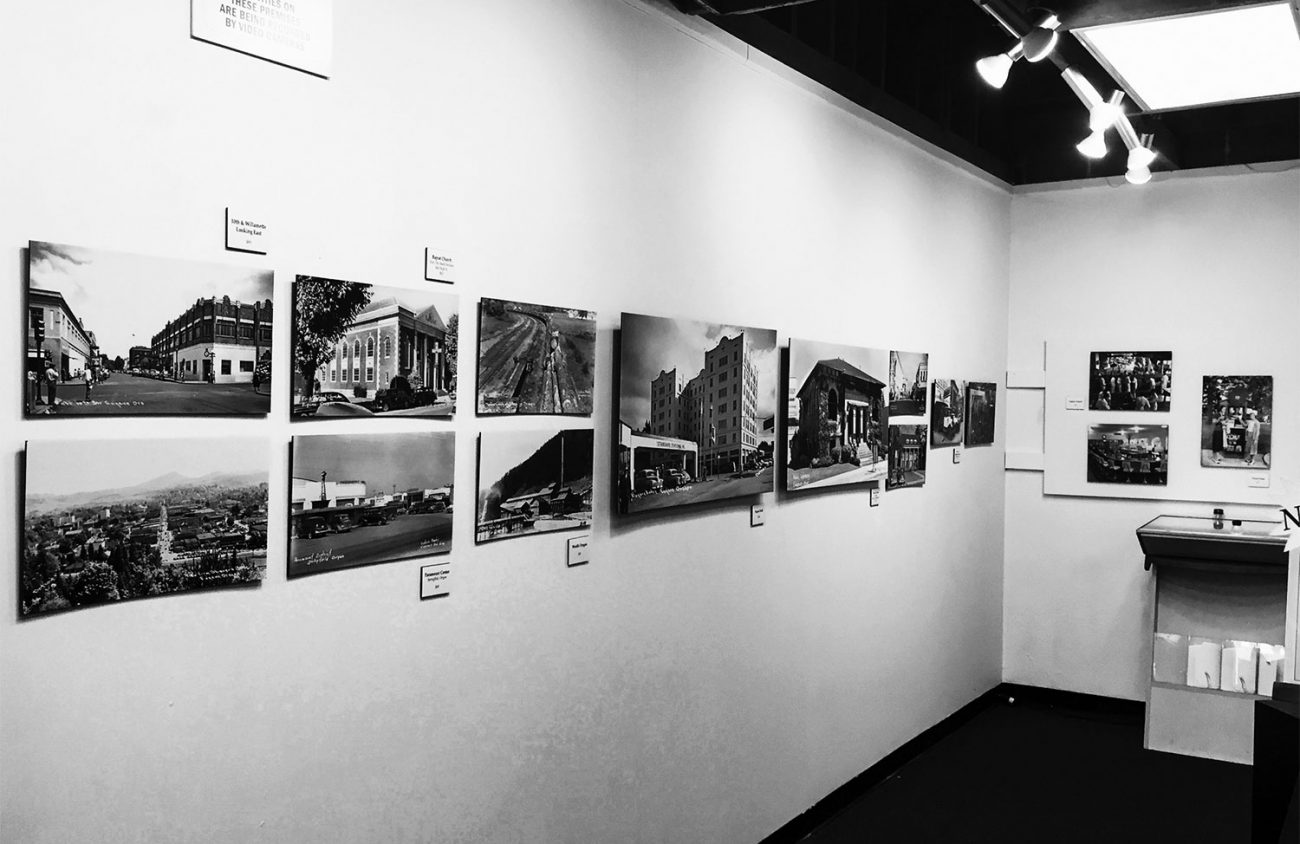A shutterbug friend once let me in on a little secret about photography. One way to make any picture more interesting, he said, is to wait 50 years.
This rule may sound simplistic, but I’ve found it to be generally true.
This is because every photograph is a document of history packed with information. And as that past recedes, its contents naturally become exotic. Small details like signposts, car design and hairstyles, which may have passed unnoticed by the photographer at the time, take on outsized significance.
If you don’t believe me, try it for yourself. Old monochrome photographs of Eugene are displayed in a number of public spots around town — on the ground floor of PeaceHealth labs on Hilyard, for example. Or the Atrium building, the stairway of Smith Family Books, the walls of Hey Neighbor! Pizza House or the Lane County Museum, where a show of old Eugene photos Would You Believe It? is up for the next several months.
The best of the bunch, at least for the next week, is at Dot Dotson’s. Its small gallery near the entrance shows photos by the store’s eponymous founder, Dot Dotson himself. Mr. Dotson is now deceased — his family runs the store — but, while alive, he busied himself documenting every facet of mid-century Eugene.
The negatives — captioned in handwriting directly onto the film — have been held in storage for years, shared occasionally on the store’s Facebook page but never presented in an exhibition until now.
I’m happy to say the 50-year rule applies. Dotson’s findings have only grown more intriguing with time.
How amazing to see the local Greyhound Bus Terminal — now boarded up and seemingly destined for the wrecking ball — in its early years as an art deco landmark. Or the dormant Persian rug store adjoining Kesey Plaza as a spiffy clothing shop. Why, there’s the familiar Eugene Hotel… fronted by a gas station? And First Baptist Church before it became The Shedd. A photo of East Broadway lined with shops, signs and bustle looks, at first blush, to be another city entirely.
The post-war challenges of downtown Eugene have been well documented. No need to rehash here. Still, it comes as a jolt to see them in visual form. Where have you gone, Eugene DiMaggio?
The show’s centerpiece is a view looking south from atop Skinner Butte. The city of Eugene stretches leisurely across the valley below. This is perhaps the most photographed vista in the city. Maybe you’ve taken this photo yourself.
But the view’s ubiquity didn’t deter Dotson, a master of the quotidian. Willamette Street splits the frame, peeling open the city from train tracks to Spencer Butte. In the distant periphery is the Amazon basin, still forested and undeveloped. It’s a visual gut-shot. Whether it represents the underbelly of Middle America or its platonic ideal depends on the viewer.
Photographically, Dotson embraced a direct, matter-of-fact style in the vein of Walker Evans and Eugène Atget. Or perhaps it’s the down-home civic-minded style of Eugene itself?
In any case, it’s supported by the show’s physical production. The pictures are mounted simply on foam core, and priced very reasonably. You might want to take one home. It’ll look great over the mantle.
In 50 years it’ll look even better.
A Look Back: Selected Photographs From the Dot Dotson Archives is on view at Dot Dotson’s, 1668 Willamette Street, through March 7.
